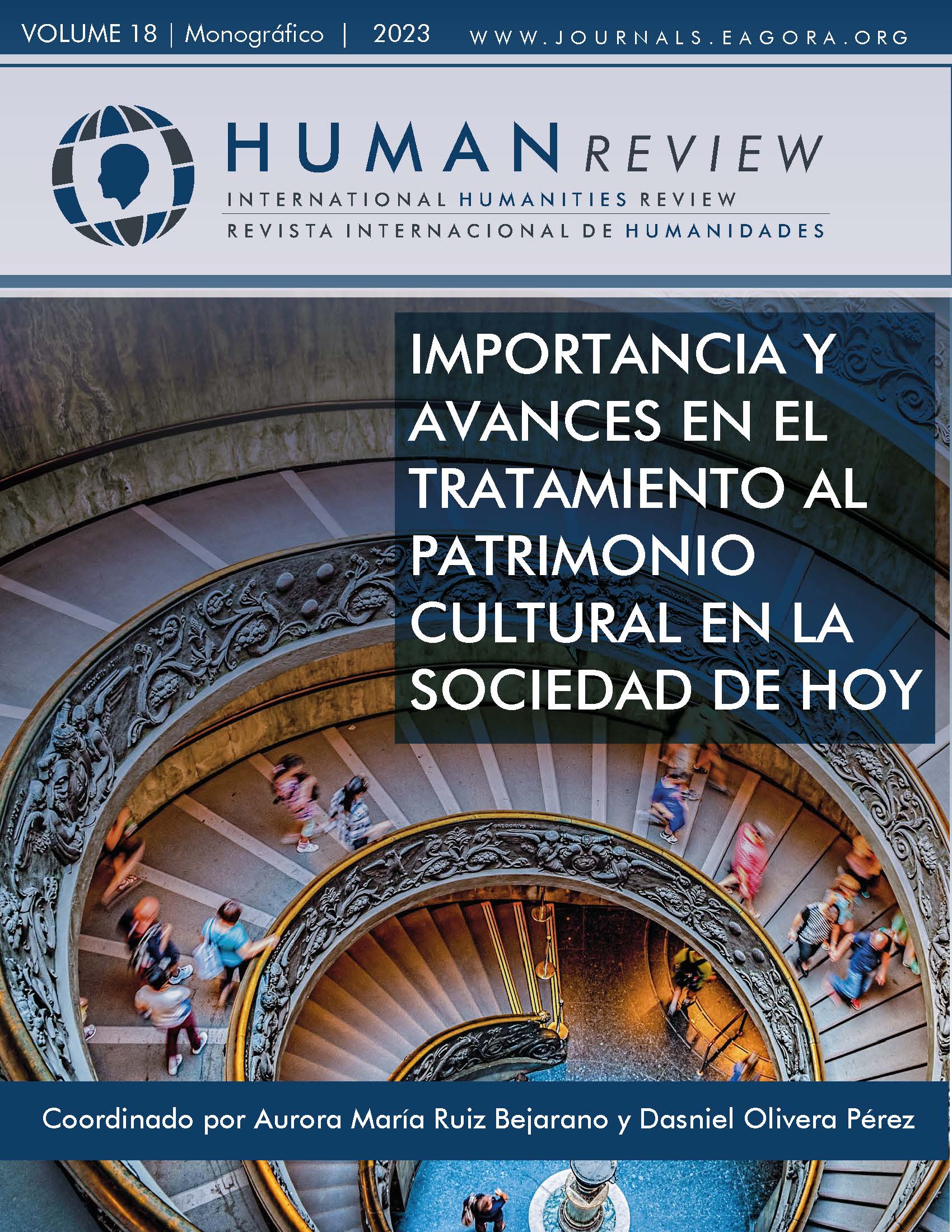Expolio y destrucción en Oriente Próximo en el contexto de guerra e inestabilidad política
DOI:
https://doi.org/10.37467/revhuman.v18.4864Palavras-chave:
Expolio, Oriente Próximo, Guerra, Patrimonio cultural, Daesh, EIIL, Tráfico de antigüedadesResumo
Since the Arab Spring of 2011, the cultural heritage of the Middle East has faced a serious threat, as Daesh (ISIS) and other extremist organizations turned archaeological sites into a financing tool. In 2016, around 100,000 cultural objects of great importance, including 4,500 archaeological sites, nine of which are included in the UNESCO World Heritage List, were under the control of the Islamic State in Syria and Iraq. However, not only these extremist groups are included in these dynamics. Part of the population of these countries does not hesitate to carry out this type of activity to get ahead.
Referências
AAAS. (2014). Informe anual. www.aaas.org/sites/default/files/AAAS_2014%20Annual%20Report.pdf
Ali, Ch. (2013). Syrian Heritage under Threat, Jemahs, 1(4), 351-366. www.jstor.org/stable/10.5325/jeasmedarcherstu.1.4.0351 DOI: https://doi.org/10.5325/jeasmedarcherstu.1.4.0351
Brown, M. (2021). British Museum helps return 2.000-year-old looted statue to Libya. The Guardian. www.theguardian.com/culture/2021/may/10/british-museum-helps-return-2000-year-old-looted-statue-to-libya
Bogdanos, M. (2005). The Casualities of War: The Truth about Iraq Museum. American journal of Archaeology, 109(3), 477-526. DOI: https://doi.org/10.3764/aja.109.3.477
Casana, J. (2015). Satellite imagery-based anaysis of archaeological looting in Syria. Near East. Archeol, 78, 142-152. DOI: https://doi.org/10.5615/neareastarch.78.3.0142
Casana, J, & Panahipour, M. (2014). Notes on a Disappearing Past: Satellite-Based monitoring of looting and damage to Archaeological Sites in Syria, Journal of Eastern Mediterranean Archaeology and Heritage Studies, 2(2), 129-151. DOI: https://doi.org/10.5325/jeasmedarcherstu.2.2.0128
Howard, R. (2015). Diggin In and Trafficking Out: How the Destruction of Cultural Heritege Funds Terrorism. CTC SENTINEL, 8, 14-18.
Lizaranzu, M. T. (2016). El papel de la UNESCO en la protección del patrimonio en zonas de conflicto. Tribuna abierta. www.uria.com/documentos/publicaciones/4960/documento/tribuna.pdf?id=6209
Loosley, E. (2015). Looting and archaeological Destruction in Syria. Academia.edu. www.academia.edu/31460342/Looting_and_Archaeological_Destruction_in_Syria DOI: https://doi.org/10.1057/palcomms.2015.36
VV. AA. (2017). Written testimony of ICE Homeland Security Investigations International Operations Assistant Director Raymond Villanueva for a House Committee on Financial Services, Subcommittee on Terrorism and Illicit Finance hearing titled “The Exploitation of Cultural Property: Examining Illicit Activity in the Antiquities and Art Trade”. Homeland Security. www.dhs.gov/news/2017/06/23/written-testimony-ice-house-financial-services-subcommittee-terrorism-and-illicit
Downloads
Publicado
Como Citar
Edição
Seção
Licença
Os autores/as que publicam nesta revista concordam com os seguintes termos:
- Os autores/as terão os direitos morais do trabalho e cederão para a revista os direitos comerciais.
- Um ano após a sua publicação, a versão do editor estará em acesso aberto no site da editora, mas a revista manterá o copyright da obra.
- No caso dos autores desejarem asignar uma licença aberta Creative Commons (CC), poderão a solicitar escrevendo a publishing@eagora.org.









